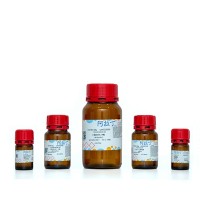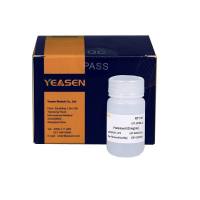A nonradioactive high-performance anion-exchange chromatographic method based on MDD-HPLC (Mayr Biochem. J. 254:585–591, 1988) was developed for the separation of inositol hexakisphosphate (InsP 6 , phytic acid) and most isomers of pyrophosphorylated inositol phosphates, such as diphosphoinositol pentakisphosphate (PP InsP 5 or InsP 7 ) and bis-diphosphoinositol tetrakisphosphate (bisPP InsP 4 or InsP 8 ). With an acidic elution, the anion-exchange separation led to the resolution of four separable PP InsP 5 isomers (including pairs of enantiomers) into three peaks and of nine separable bisPP InsP 4 isomers into nine peaks. The whole separation procedure was completed within 20–36 min after optimization. Reference standards of all bisPP InsP 4 isomers were generated by a nonenzymatic shotgun synthesis from InsP 6 . Hereby, the phosphorylation was brought about nonenzymatically when concentrated InsP 6 bound to the solid surface of anion-exchange beads was incubated with creatine phosphate under optimal pH conditions. From the mixture of pyrophosphorylated InsP 6 derivatives containing all theoretically possible isomers of PP InsP 5 , bisPP InsP 4 , and also some isomers of trisPP InsP 3 , isomers were separated by anion-exchange chromatography and fractions served as reference standards of bisPP InsP 4 isomers for further investigation. Their isomeric nature could be partly assigned by comparison with position specifically synthesized or NMR-characterized purified protozoan reference compounds and partly by limited hydrolysis to PP InsP 5 isomers. By applying this nonradioactive analysis technique to cellular studies, the isomeric nature of the major bisPP InsP 4 in mammalian cells could be identified without the need to obtain sufficient material for NMR analysis.






